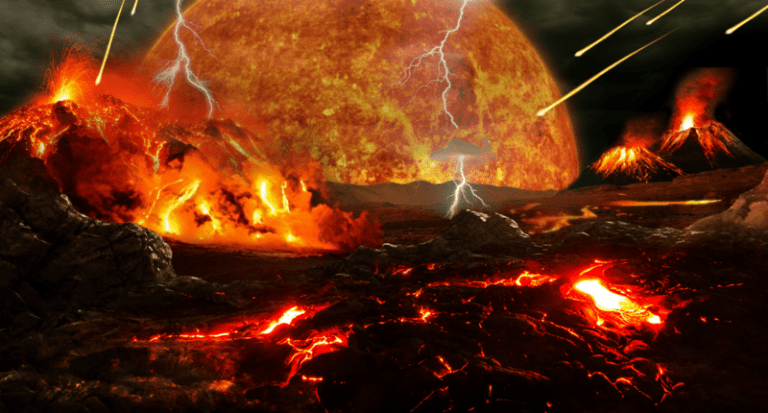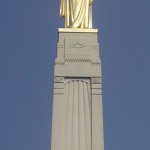
An artist’s impression of the Hadean period of Earth’s history, by Tim Bertelink
(Wikimedia Commons public domain image)
Science & Mormonism Series 1: Cosmos, Earth, and Man Understanding Evolution: An LDS Scientific Perspective
Part of our book chapter reprint series, this article by Steven L. Peck originally appeared in Science & Mormonism Series 1: Cosmos, Earth, and Man (2016).
Abstract: Steven Peck, a BYU Professor of Biology, takes it as “axiomatic that evolution in its broad sense is the way the biological world works, although details are still being worked out and amazing discoveries will continue for centuries.” Using vivid examples, he explains both the compelling nature and the complexity of evolution. He also describes the weak science behind what is popularly called the “Intelligent Design” movement. However, “evolution does not negate by one iota the idea of a purposeful universe that was organized by a loving, intelligent God.”
***
“Is standing up for expertise a fool’s errand?”
In an era of anti-expert populism, it is more important than ever to stand up for scientific truth. But it is also harder, coming with a high risk of personal attack. Anna McKie speaks to those who have paid a high price for their advocacy, and draws out the lessons for those who want to take up the cause
I’m not a scientist, but I’ve seen (up close and personal) how nasty these personal attacks can become when some folks dislike your position.
***
This is, truth be told, a screamingly obvious problem. I’m amazed that it continues, unabated:
“Psychology Still Skews Western and Affluent. Can It Be Fixed?”
You can file it under “Tales of the WEIRD.”
***
I grew up in Southern California, a place notoriously prone to earthquakes and still waiting rather nervously for the Big One.
Apparently, though, SoCal experiences far more quakes than anybody realized.
According to the January/February 2020 issue of Discover (on page 67), a recent study conducted by seismologists at the California Institute of Technology (near my childhood and youthful home) and the Los Alamos National Laboratory identified 1.81 million tiny tremors that had been hidden in data collected between 2008 and 2017. That’s roughly one earthquake every three minutes. They had to be distinguished (by their “shape”) from the background noise of helicopters, construction, and the famous traffic of Los Angeles.
The findings were published in the journal Science. The hope is that they can help scientists to more accurately understand how earthquakes start. Previous small-scale simulations had indicated that primary earthquakes, what are called “mainshocks,” should always be preceded by smaller “foreshocks.” But previous seismographic evidence had failed to detect such foreshocks in between 50% and 90% of the cases examined. The new data has considerably strengthened the evidence for “foreshocks.”











